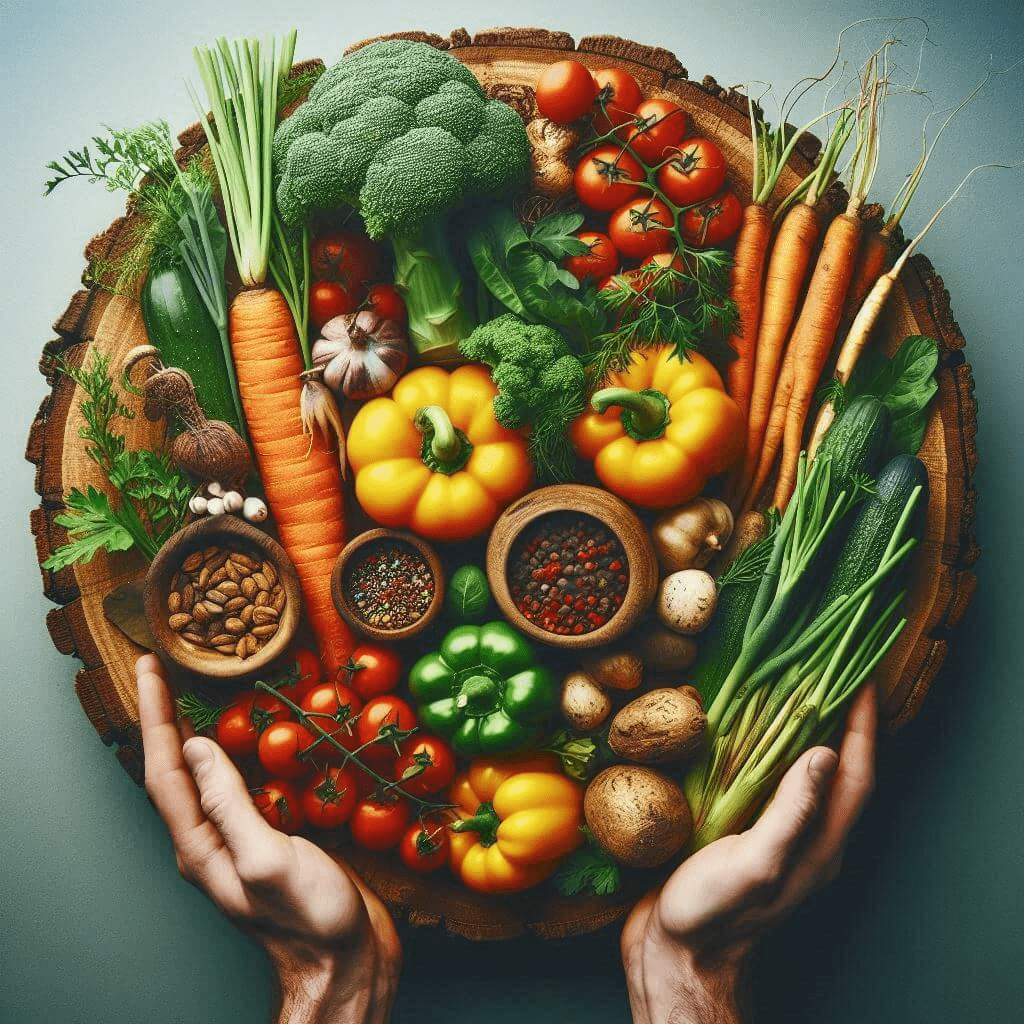Growing your vegetables can be rewarding and fun. This guide will help you start a successful vegetable garden, even if you’re a beginner. We’ll cover the basics of planning, planting, and maintaining your garden.
Gardening Tools and Supplies for Beginners

As a new gardener, you don’t need to buy every tool available. Start with these basics:
- Hand trowel: For digging small holes and planting.
- Garden fork: Helps loosen soil and mix in amendments.
- Pruning shears: For trimming plants and harvesting.
- Watering can or hose: Essential for keeping your plants hydrated.
- Garden gloves: Protect your hands while working.
- Wheelbarrow or garden cart: Useful for moving soil, compost, or plants.
- Rake: Helps level soil and gather leaves or debris.
- Garden hoe: For weeding and creating furrows for planting.
- Plant labels: To keep track of what you’ve planted.
- Compost bin: Turn kitchen scraps and yard waste into nutrient-rich soil.
Don’t forget about proper gardening clothes. Wear comfortable, sturdy shoes and clothes you don’t mind getting dirty. A wide-brimmed hat can protect you from the sun. For more details on choosing the right gardening attire, check out our article on Essential Gardening Clothes for Comfort and Safety.
As you gain experience, you can add more specialized tools to your collection. Invest in quality tools that will last longer and make your work easier. Clean and store your tools properly to extend their life.
Choosing a Location
Pick a spot that gets at least 6 hours of direct sunlight daily. Most vegetables need lots of sun to grow well. Make sure the area has good drainage and is close to a water source.
If you have limited space, don’t worry. You can grow vegetables in containers on a patio or balcony. Just make sure they get enough sun and water.
Preparing the Soil

Good soil is key to a thriving garden. Start by removing grass and weeds from your chosen spot. Then, loosen the soil to about 12 inches deep. This helps roots grow easily.
Next, add organic matter like compost or well-rotted manure. This improves soil structure and adds nutrients. Mix it in well with the existing soil.
Test your soil pH. Most vegetables prefer a slightly acidic to neutral pH (6.0 to 7.0). You can buy a simple soil test kit at a garden center. If needed, add lime to raise the pH or sulfur to lower it.
Planning Your Garden
Decide what vegetables you want to grow. Choose the ones you like to eat and that suit your climate. Some easy vegetables for beginners include:
- Tomatoes
- Lettuce
- Beans
- Carrots
- Cucumbers
- Zucchini

Consider how much space each plant needs. Some vegetables, like squash, need lots of room. Others, like lettuce, can grow in small spaces.
Plan to group plants with similar needs. For example, put plants that need lots of water in one area.
Rotate your crops each year. This helps prevent soil depletion and reduces pest problems.
Planting Your Garden
You can start seeds indoors or buy seedlings from a garden center. If starting seeds, follow the instructions on the packet for when to plant.
When planting outdoors, follow the recommended spacing for each vegetable. This information is usually on the seed packet or plant label.
Plant in rows or blocks, depending on the vegetable and your garden design. Make sure to label your plants so you remember what’s where.
Water thoroughly after planting. This helps settle the soil around the roots.
Caring for Your Garden
Watering:

Most vegetables need about 1 inch of water per week. Water deeply and less often rather than shallowly and frequently. This encourages deep root growth.
Water early in the morning to reduce evaporation. Use a soaker hose or drip irrigation system to water efficiently.
Fertilizing:
Most vegetables benefit from regular fertilizing. Use a balanced, all-purpose fertilizer or organic options like compost tea.
Follow the instructions on the fertilizer package. Over-fertilizing can harm plants and attract pests.
Mulching:
Apply a 2-3 inch layer of mulch around your plants. This helps retain moisture, suppress weeds, and regulate soil temperature.
Organic mulches like straw or shredded leaves also add nutrients to the soil as they break down.
Supporting Plants:

Some vegetables, like tomatoes and peas, need support to grow well. Use stakes, cages, or trellises to keep these plants off the ground.
Install supports at planting time to avoid damaging roots later.
Weeding:
Remove weeds regularly. They compete with your vegetables for water and nutrients.
Use a hoe or hand-pull weeds when the soil is moist. Be careful not to disturb the roots of your vegetables.
Pest Control:
Check your plants regularly for signs of pests or diseases. Common garden pests include aphids, caterpillars, and slugs.
Try natural pest control methods first. These include handpicking larger pests, using row covers, or spraying with a mixture of dish soap and water.
If these don’t work, consider organic pesticides. Always follow the instructions carefully.
Harvesting:

Harvest your vegetables when they’re ripe. Regular harvesting encourages plants to produce more.
Each vegetable has different signs of ripeness. For example, tomatoes should be fully colored, and zucchini are best when 6-8 inches long.
Use clean, sharp tools to harvest. This prevents damage to the plant and reduces the risk of disease.
Common Vegetable Gardening Mistakes to Avoid
1. Planting too early: Wait until after the last frost date in your area to plant warm-season crops.
2. Overcrowding: Give plants enough space to grow. Overcrowding leads to competition for resources and can increase disease risk.
3. Overwatering: Too much water can be as harmful as too little. Make sure your soil drains well and only water when needed.
4. Neglecting soil health: Healthy soil is the foundation of a good garden. Add organic matter regularly and avoid compacting the soil.
5. Ignoring plant needs: Different vegetables have different requirements. Research what each plant needs to thrive.
6. Forgetting to succession plant: Plant short-season crops like lettuce every few weeks for a continuous harvest.
Expanding Your Garden
As you gain experience, you might want to try:
- Companion planting: Growing certain plants together can benefit both. For example, planting basil near tomatoes can improve their flavor and repel pests.
- Vertical gardening: Use trellises or vertical structures to grow vining plants like cucumbers or pole beans. This saves space and can increase yields.
- Season extension: Use techniques like cold frames or row covers to extend your growing season.
- Saving seeds: Learn to save seeds from your best-performing plants for next year’s garden.
Troubleshooting Common Gardening Issues
Yellow leaves: This can indicate nutrient deficiencies or overwatering. Check your soil and watering practices.
Wilting plants: This could be due to underwatering, overwatering, or root problems. Check the soil moisture and adjust watering as needed.
Blossom end rot: This common tomato problem is usually caused by inconsistent watering or calcium deficiency. Maintain even soil moisture and consider adding calcium to the soil.
Powdery mildew: This fungal disease appears as a white powder on leaves. Improve air circulation around plants and avoid overhead watering.
Start Enjoying Fresh, Homegrown Vegetables
Starting a vegetable garden takes some work, but the rewards are worth it. Fresh, homegrown vegetables taste great and can save you money. Gardening also provides exercise and can reduce stress.
However, every garden is different. What works in one area might not work in another. Start small, learn from your experiences, and have fun with your garden.



